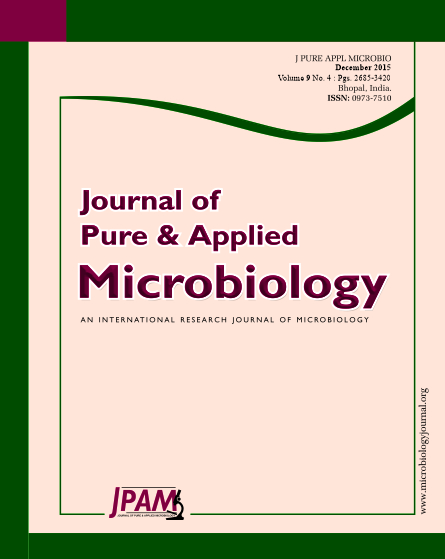In the present study phosphate (P) solubilizing strain Bacillus licheniformis CKA1 previously isolated from apple rhiosphere, was evaluated for mineral Psolubilization in Pikovskaya’s (PVK) medium containing tricalcium phosphate (TCP) as insoluble P source. Highest P-solubilization (118.00 µg mL-1) was achieved at 96 h of incubation and decreased thereafter. P solubilization potential of B. licheniformis CKA1 was further enhanced by statistical optimization of culture conditions and media components under in vitro conditions. Incubation temperature, inoculum size, glucose and yeast extract concentration were identified as significant factors affecting the Psolubilization in Plackett Burman design and were further selected for optimization in central composte design (CCD) of response surface methodology (RSM). The final medium optimized was (g L-1): glucose, 10; yeast extract, 0.50, ammonium sulphate, 0.50; KCl, 0.20; TCP, 15; MgSO4.7H2O, 0.1; MnSO4, 0.01; FeSO4, 0.01; initial pH 7.00 with 1.5 O.D. inoculum size and incubated at 35 °C for 96 h, which give 400 µg mL-1 of soluble P with 3.39-fold increase in P-solubilization compared with that obtained in the unoptimized medium. The results in study suggested that B. licheniformis CKA1 could be used in a bioprocess for the manufacture of phosphatic fertilizer from phosphate calcium minerals.
Bacillus licheniformis, central composite design, phosphate solubilization, response surface methodology.
© The Author(s) 2015. Open Access. This article is distributed under the terms of the Creative Commons Attribution 4.0 International License which permits unrestricted use, sharing, distribution, and reproduction in any medium, provided you give appropriate credit to the original author(s) and the source, provide a link to the Creative Commons license, and indicate if changes were made.


